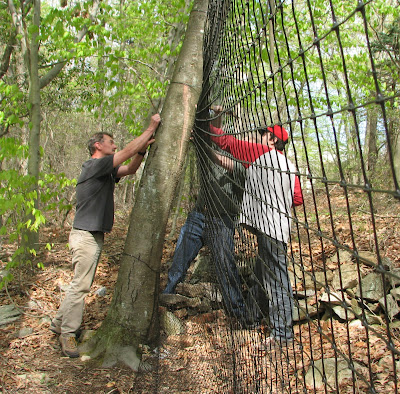The cactus bed is complete - six native Prickly Pear, all from Twombly Nursery in Monroe. I learned that the nearly-invisible thorns will go right through a leather glove. I don't know how, since they look so fragile, but they do. I pulled my glove off, and there they were sticking out of my thumb, and really hard to pull out. Lacking tweezers, I had to use my teeth. After that, to remove the cacti from the pots I just turned them upside down and shook them until they plopped on the ground.
They have two types of barbs: the 1 inch-long dangerous-looking ones, and the nearly-invisible slivers. The big ones tend to fall out, leaving the truly hazardous ones to attack you.
Prickly Pear grows naturally in Connecticut along the coast. You can see it at the Milford Point Coastal Audubon Center along the boardwalk.
They have two types of barbs: the 1 inch-long dangerous-looking ones, and the nearly-invisible slivers. The big ones tend to fall out, leaving the truly hazardous ones to attack you.
Prickly Pear grows naturally in Connecticut along the coast. You can see it at the Milford Point Coastal Audubon Center along the boardwalk.

































